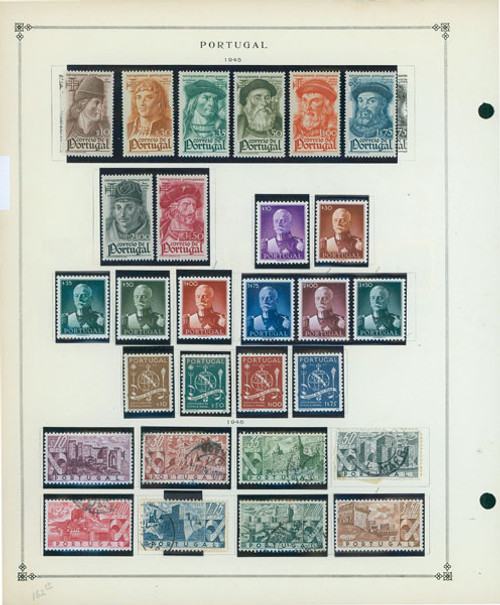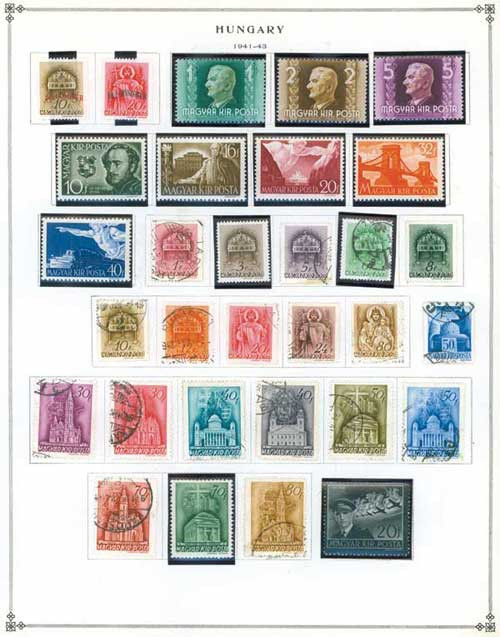
# MCC737 - 1941-90 Iceland
Issue Dates: 1941-1990
Scott Catalogue Value: $1,113.10
Mystic Price: $610.00
You Save: $503.10
Iceland collection contains 505 stamps – most in mint condition – mounted on 32 album pages. Some complete sets plus Airmail and Semi-postal issues. Highlights include #261 (catalogue value $25.00), #268 (value $45.00) and #285-86 ($32.50).
In 870 A.D., Ingolfur Arnason, a Norwegian Viking, sailed more than 600 miles from his homeland to a large, unsettled island just below the Arctic Circle. He established a farm and more settlers followed. During an extremely harsh winter, when coastal waters were choked with ice, the island was named Iceland. A second, perhaps more accurate name, has been used for the island: The Land of Ice and Fire.
The site of Arnason’s first settlement grew to become Reykjavik, now the capital. More than half of Iceland’s 271,003 people live there, and virtually all live on the southwest coast. The lowlands in this area are good for growing crops. The gulfstream and warm ocean currents keep temperatures relatively mild, so harbors are free of ice all year.
Most Icelanders dress like Westerners. For holiday celebrations, traditional outfits of black cloth embroidered with gold are worn. There are no family names in Icelandic culture. Children are given a first name, but the second name is comprised of the father’s first name with the addition of “son” for boys and “dottir” for girls. This system creates so much repetition that a person’s occupation is often listed after their name in the phone book for proper identification!
Icelanders enjoy a very high standard of living. Most buildings are heated by steam piped from nearby hot springs. Hydroelectric power comes from the glacier-fed rivers. This makes Iceland one of the few nations in the world with a power surplus. The export of fish products provides money for manufactured goods to be imported.
Despite its harsh appearance, Iceland provides its inhabitants with the necessities of life. Geological and environmental events that would otherwise seem destructive have allowed Icelanders to flourish.
Issue Dates: 1941-1990
Scott Catalogue Value: $1,113.10
Mystic Price: $610.00
You Save: $503.10
Iceland collection contains 505 stamps – most in mint condition – mounted on 32 album pages. Some complete sets plus Airmail and Semi-postal issues. Highlights include #261 (catalogue value $25.00), #268 (value $45.00) and #285-86 ($32.50).
In 870 A.D., Ingolfur Arnason, a Norwegian Viking, sailed more than 600 miles from his homeland to a large, unsettled island just below the Arctic Circle. He established a farm and more settlers followed. During an extremely harsh winter, when coastal waters were choked with ice, the island was named Iceland. A second, perhaps more accurate name, has been used for the island: The Land of Ice and Fire.
The site of Arnason’s first settlement grew to become Reykjavik, now the capital. More than half of Iceland’s 271,003 people live there, and virtually all live on the southwest coast. The lowlands in this area are good for growing crops. The gulfstream and warm ocean currents keep temperatures relatively mild, so harbors are free of ice all year.
Most Icelanders dress like Westerners. For holiday celebrations, traditional outfits of black cloth embroidered with gold are worn. There are no family names in Icelandic culture. Children are given a first name, but the second name is comprised of the father’s first name with the addition of “son” for boys and “dottir” for girls. This system creates so much repetition that a person’s occupation is often listed after their name in the phone book for proper identification!
Icelanders enjoy a very high standard of living. Most buildings are heated by steam piped from nearby hot springs. Hydroelectric power comes from the glacier-fed rivers. This makes Iceland one of the few nations in the world with a power surplus. The export of fish products provides money for manufactured goods to be imported.
Despite its harsh appearance, Iceland provides its inhabitants with the necessities of life. Geological and environmental events that would otherwise seem destructive have allowed Icelanders to flourish.









